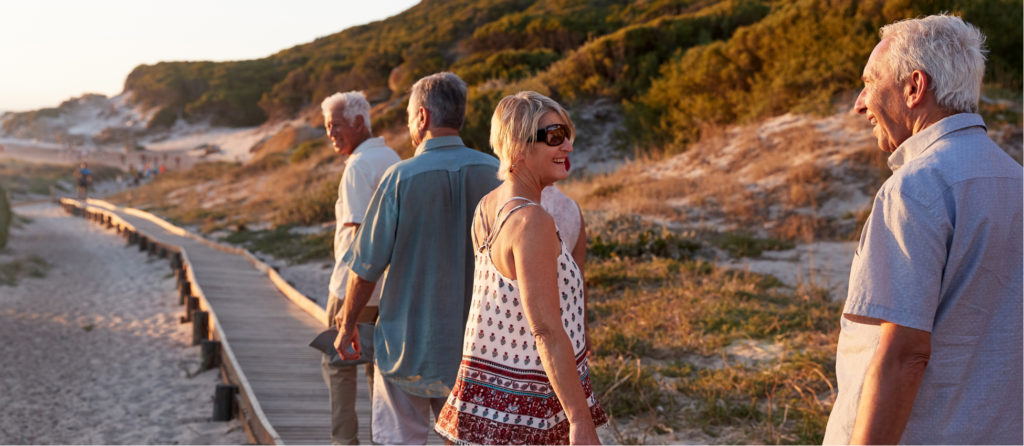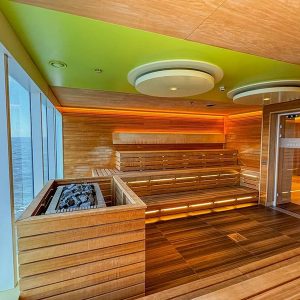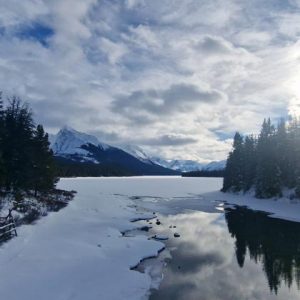Part 1 was about planning a walk aimed at anyone who fancied a bit more of a challenge than their regular walking, but not about going off into the wilderness ill-prepared and dragging a tent. If you are walking for several days, I think you deserve a good night’s sleep in a B&B. Walking along an existing route is an easier way to get started and these blogs are based on 135 mile trek over 15 days on Wye Valley Way.
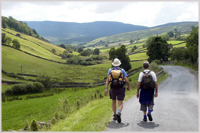 The official guide tells you distances between points so, combined with a road or OS map, you can find suitable stopover points and start a search for accommodation. Remember to add extra mileage for leaving the path and getting to the accommodation at the end of the day. Some days it will be better to just do around 5 miles so that there is time to relax while still putting the boots on and walking every day.
The official guide tells you distances between points so, combined with a road or OS map, you can find suitable stopover points and start a search for accommodation. Remember to add extra mileage for leaving the path and getting to the accommodation at the end of the day. Some days it will be better to just do around 5 miles so that there is time to relax while still putting the boots on and walking every day.
As you know from Part 1, I arrange for a change of clothes at the B&B every 2-3 days (posted ahead). On some established routes, luggage can be transported for you. My ideal rucksack, therefore includes the following:
Critical – choose a comfortable rucksack and train with it before you start your walk to see if/where it causes pressure on the shoulders. If you are female, the ideal shape is wider at the base so that it sits better on your hips and shoulder straps are then less likely to rub as contents don’t pull the back down.
Standard contents for me – 1 pair boot socks/ 2 T shirts/ undies/ loose cotton trousers (not jeans)/ medium weight sweater/ thin T shirt fabric dress, light weight cardigan plus spare sandals for evening.
Standard contents for my husband – 1 pair boot socks, 2 T shirts, undies, shorts, light weight trousers, shirt and canvas boat shoes for evening. The spare sandals or shoes should be good to walk a few miles in just in case there are problems with your boots.
In the rucksack – mini travel wash kit plus talc for feet (and anywhere else you fancy) and wet wipes for everywhere. Mini first Aid kit including plasters, bite cream, insect spray, sun cream and paracetemol. I always have padded moleskin and scissors as much better to put this inside boots where they potentially rub rather than on your feet. For me, this is any seam. 2 small bottles of water, one each side for balance, packet fruit & nut mix and dried apricots (any quick release energy foods).
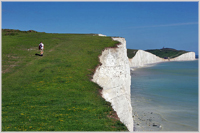 Mini torch, camera. Mobile phone with ICE number, number of main local taxis along the route, number of the person you are walking with. This is for finding their phone if it falls into a shrub or finding them if they fall down a hole! Remember the phone charger, a mini roll of cellotape plus some safety pins so you can fix anything!
Mini torch, camera. Mobile phone with ICE number, number of main local taxis along the route, number of the person you are walking with. This is for finding their phone if it falls into a shrub or finding them if they fall down a hole! Remember the phone charger, a mini roll of cellotape plus some safety pins so you can fix anything!
The standard contents are basically what I send ahead, the evening gear only being changed after a week (only worn for around 2 hours a night). I always have one walking pole – not two as I manage to trip over the second one.
What to wear?
Clearly this is personal choice, but based on experience I find light weight cotton trousers much better than man-made fibres of “walking trousers” as I get too hot. Safety pins used if I decide to roll them up.
- Cotton shorts if you are prefer (my husband!) but try them out first.
- Light weight waterproof over-trousers – much better option than heavy padded waterproof trousers, especially if weather is changeable.
- Light weight waterproof jacket over a fleece – again a much better option than padded waterproof jacket. Wear thin jumper underneath for extra warmth – ie thin layers better than single heavy item.
- Boots you have worn hundreds of times NOT new ones! I have been on charity treks world-wide and am amazed how many people take new boots so their feet are a painful mess within 2 days.
-
 Socks – a tricky one. I only wear one pair of padded walking socks inside out. All socks should be inside out- any seam, ridge or even just the tiny knot at end of a seam is a potential blister. Inner socks don’t always help either (they do not work for me), and my friend was amazed how much better her feet were when she ditched the inner pair. Also check how tight elastic is at top as this can seriously restrict blood flow around lower leg when feet get really hot. I cut the elastic border off or cut a slit to loosen the pressure. Yes, I know walking socks are expensive but my feet are priceless.
Socks – a tricky one. I only wear one pair of padded walking socks inside out. All socks should be inside out- any seam, ridge or even just the tiny knot at end of a seam is a potential blister. Inner socks don’t always help either (they do not work for me), and my friend was amazed how much better her feet were when she ditched the inner pair. Also check how tight elastic is at top as this can seriously restrict blood flow around lower leg when feet get really hot. I cut the elastic border off or cut a slit to loosen the pressure. Yes, I know walking socks are expensive but my feet are priceless. - Take an elastic support for knee and ankle.
- Long thin open-weave scarf for when it is hot/ cold/ windy and to protect legs when walking through shrubby ground in shorts.
- Bumbag or small shoulder bag for money, phone, tickets, guidebook & relevant sections of map. I also squeeze in a small plain-paper book and pen for notes and sketching.
So, plan the route and stopover points, book B&B, and train as long as possible before the walk with the boots and rucksack you will be using. Decide what you will be wearing and carrying, and get all the kit together in plenty of time. Make sure someone else knows your planned route and stopover points. If they can come and wave you off, meet you part way, and meet you at the end waving a bottle of water and a bottle of champagne, this will add significantly to the whole experience!
Most of all, this is supposed to be an exciting adventure not a gruelling endurance test. It is intended to present a challenge, something you can enjoy and look back on with pride at your individual achievement. Ultimately, your planning beforehand will ensure that it is an “achievable” challenge.
Silver Travel Advisor recommends Ramblers Walking Holidays for guided and independent walking holidays.
• Read Planning a long distance walk in the UK – Part 1
• Read Planning a long distance walk in the UK – Part 3
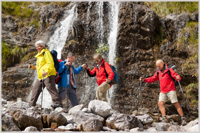 Socks – a tricky one. I only wear one pair of padded walking socks inside out. All socks should be inside out- any seam, ridge or even just the tiny knot at end of a seam is a potential blister. Inner socks don’t always help either (they do not work for me), and my friend was amazed how much better her feet were when she ditched the inner pair. Also check how tight elastic is at top as this can seriously restrict blood flow around lower leg when feet get really hot. I cut the elastic border off or cut a slit to loosen the pressure. Yes, I know walking socks are expensive but my feet are priceless.
Socks – a tricky one. I only wear one pair of padded walking socks inside out. All socks should be inside out- any seam, ridge or even just the tiny knot at end of a seam is a potential blister. Inner socks don’t always help either (they do not work for me), and my friend was amazed how much better her feet were when she ditched the inner pair. Also check how tight elastic is at top as this can seriously restrict blood flow around lower leg when feet get really hot. I cut the elastic border off or cut a slit to loosen the pressure. Yes, I know walking socks are expensive but my feet are priceless.